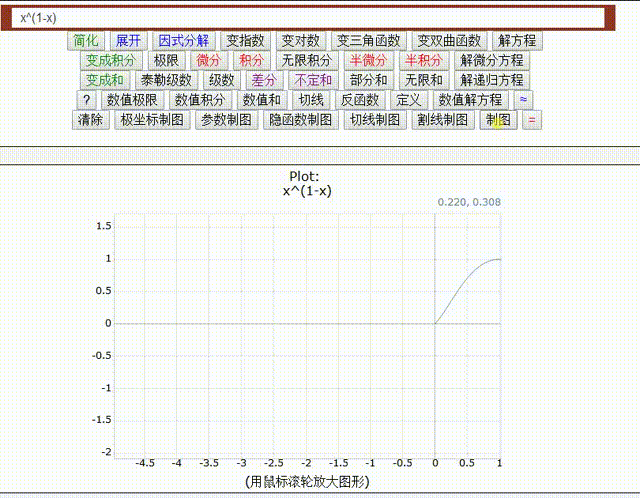 +
+  +
+  +
+  =
= 
 +
+  +
+  +
+  =
= 
This is the continuation of a previous presentation.
The hyperbolic cosine differs from the sine merely in the sign of the exponential. Solving for this gives
Applying the behavior of the logarithm, the inverse hyperbolic cosine on an arbitrary branch is
The individual branches look like this:
One half of each branch again comes from using the plus sign on the square root, the other half from the minus sign. The lines where clearly discordant colors meet are again where transitions to higher or lower branches occur.
The real part of this function retains the same numerical value between branches, while the imaginary part moves up and down in value. Visualize the imaginary part of several branches simultaneously:
The circular cosine differs from the hyperbolic cosine in having imaginary units in the exponential. Solving for this gives
Applying the behavior of the logarithm, the inverse circular cosine on an arbitrary branch is
The individual branches look like this:
The imaginary part of this function retains the same numerical value between branches, while the real part moves up and down in value. Visualize the real part of several branches simultaneously:
The hyperbolic secant is the algebraic inverse of the hyperbolic cosine. Solving for the exponential gives
Applying the behavior of the logarithm, the inverse hyperbolic secant on an arbitrary branch is
The individual branches look like this:
The real part of this function retains the same numerical value between branches, while the imaginary part moves up and down in value. Visualize the imaginary part of several branches simultaneously:
The circular secant differs from the hyperbolic secant in having imaginary units in the exponential. Solving for this gives
Applying the behavior of the logarithm, the inverse circular secant on an arbitrary branch is
The individual branches look like this:
The imaginary part of this function retains the same numerical value between branches, while the real part moves up and down in value. Visualize the real part of several branches simultaneously:
The hyperbolic cosecant is the algebraic inverse of the hyperbolic sine. Solving for the exponential gives
Applying the behavior of the logarithm, the inverse hyperbolic cosecant on an arbitrary branch is
The individual branches look like this:
The real part of this function retains the same numerical value between branches, while the imaginary part moves up and down in value. Visualize the imaginary part of several branches simultaneously:
The circular cosecant differs from the hyperbolic cosecant in having imaginary units in the exponential, plus an extra factor. Solving for the exponential gives
Applying the behavior of the logarithm, the inverse circular cosecant on an arbitrary branch is
The individual branches look like this:
The imaginary part of this function retains the same numerical value between branches, while the real part moves up and down in value. Visualize the real part of several branches simultaneously:
And that completes the inventory of individual functions.